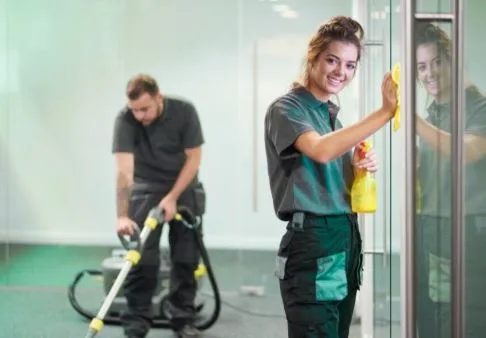How to Choose the Right Toothbrush and Toothpaste for Your Child
Choosing the right toothbrush and toothpaste is essential for your child’s oral health. This guide helps parents navigate options, from manual vs. electric toothbrushes to understanding toothpaste ingredients, ensuring you make informed decisions for a bright, healthy smile.
Understanding Your Child’s Dental Development
Before diving into product selection, it’s important to understand how your child’s teeth and mouth develop over time. This knowledge will help you choose products that match their current needs and abilities.
Babies typically get their first tooth around six months of age, though this can vary significantly. By age three, most children have all 20 primary teeth. These baby teeth serve important functions beyond chewing—they help with speech development and hold space for permanent teeth.
Around age six, children begin losing baby teeth and getting their permanent ones. This mixed dentition phase continues until approximately age 12 or 13, when most permanent teeth have emerged. Each stage requires different approaches to oral care and product selection.
Selecting the Perfect Toothbrush for Different Ages
Infants and Toddlers (6 months to 2 years)
For babies just getting their first teeth, start with a soft finger brush or silicone finger cot with gentle bristles. These allow you to massage gums while cleaning emerging teeth. As more teeth appear, transition to a small-headed toothbrush specifically designed for infants.
Look for toothbrushes with extra-soft bristles and handles that fit comfortably in your hand, since you’ll be doing all the brushing at this age. The brush head should be small enough to maneuver easily in your baby’s tiny mouth without causing discomfort.
Preschoolers (2 to 5 years)
This age group needs toothbrushes with slightly larger heads to accommodate more teeth, but still small enough for their developing mouths. The handle should be thick and easy for small hands to grip, though parental supervision and assistance remain essential.
Choose brushes with soft bristles to protect delicate gums and developing enamel. Many toothbrushes for this age group feature fun colors, cartoon characters, or other appealing designs that can make brushing more enjoyable.
School-Age Children (6 years and up)
As children develop better motor skills and begin losing baby teeth, they need toothbrushes that can effectively clean both permanent and primary teeth. The brush head should be appropriately sized—not too large that it can’t reach back teeth, but not so small that cleaning becomes inefficient.
At this stage, you might consider introducing an electric toothbrush if your child shows interest. Electric toothbrushes can be particularly helpful for children who struggle with proper brushing technique or need extra motivation to brush longer.
Manual vs. Electric Toothbrushes for Kids
Both manual and electric toothbrushes can be effective for children when used properly. The choice often depends on your child’s preferences, motor skills, and specific dental needs.
Manual toothbrushes offer several advantages for young children. They’re less expensive, don’t require charging, and help children develop proper brushing technique and motor control. They’re also quieter, which is important for children who might be sensitive to noise.
Electric toothbrushes can benefit children who have difficulty with manual dexterity or those who find brushing boring. Many electric models for kids feature built-in timers, encouraging children to brush for the recommended two minutes. Some even play music or have apps that gamify the brushing experience.
Consider your child’s maturity level before introducing an electric toothbrush. Some young children might find the vibration uncomfortable or frightening, while others love the novelty.
Choosing the Right Toothpaste
Fluoride Content Considerations
Fluoride strengthens tooth enamel and helps prevent cavities, making it an important ingredient in most toothpastes. However, the amount of fluoride appropriate for children varies by age.
For children under three years old, use a fluoride toothpaste with no more than 1,000 parts per million (ppm) fluoride. Apply only a smear the size of a grain of rice. Children this age haven’t fully developed the ability to spit, so they’ll likely swallow most of the toothpaste.
Children aged three to six should use a pea-sized amount of toothpaste containing 1,000-1,450 ppm fluoride. Teach them to spit out the toothpaste after brushing and avoid swallowing it.
Children over six can typically use regular adult toothpaste, which usually contains around 1,450 ppm fluoride.
Special Formulations for Children
Many toothpastes are specifically formulated for children’s needs and preferences. These products often feature milder flavors like strawberry or bubblegum instead of strong mint, which can be overwhelming for young taste buds.
Some children’s toothpastes are designed to be safe if swallowed in small amounts, though spitting should still be encouraged. Others contain gentle abrasives that clean effectively without damaging developing enamel.
Avoid whitening toothpastes for children, as these can be too abrasive for young teeth. Similarly, tartar control formulations are generally unnecessary for children and may contain ingredients that are too harsh.
Red Flags to Avoid
When shopping for children’s dental products, be aware of potential pitfalls. Avoid toothbrushes with hard or medium bristles, which can damage gums and tooth enamel. Brushes with heads that are too large won’t effectively clean all tooth surfaces and may cause discomfort.
Be cautious of novelty toothbrushes that prioritize appearance over function. While fun designs can motivate children to brush, the brush must still clean effectively. Ensure any decorative elements won’t break off and become choking hazards.
For toothpaste, avoid products with high fluoride content for young children, and be wary of “natural” toothpastes that may lack fluoride entirely unless recommended by your dentist for specific reasons.
When to Replace Dental Products
Replace toothbrushes every three to four months or sooner if bristles become frayed or splayed. Dentists, like those in Salt Lake City, also recommend replacing toothbrushes after illnesses to prevent reinfection.
Monitor toothpaste expiration dates, as expired products may be less effective. Most toothpastes remain effective for about two years from manufacture.
Conclusion
Establishing good oral hygiene for children involves creating a positive, consistent brushing routine, allowing them to choose their toothbrush and toothpaste, and modeling proper technique.






